calsfoundation@cals.org
Parkin Archeological State Park
| Location: | Cross County |
| Area: | 160 acres |
Parkin Archeological State Park in northeast Arkansas preserves and interprets a Mississippian-period Native American village that existed from approximately AD 1000 to 1550. European-made trade items from the era of Hernando de Soto’s expedition recovered at the park and written descriptions of the village support theories that the Spanish visited the Parkin Site in 1541. Many archeologists believe the site may be Casqui, mentioned prominently in the de Soto journals.
Remnants of Indian villages similar to the Parkin Site were once numerous in eastern Arkansas, but soil erosion, careless digging, and farming destroyed virtually all of them during the nineteenth century. The prehistoric village on the eastern bank of the St. Francis River covered about seventeen acres and was enclosed by the river on the west and a soggy moat on three sides. Archaeological studies have determined a wooden palisade also surrounded the village. A large platform earthen mound, built by the natives, still overlooks the river today. It is believed to be the most intact (that is, undisturbed by looters) native village of its time period remaining in northeast Arkansas.
The Parkin Site was protected in an unusual way. After the town of Parkin (Cross County) was established in 1887, cotton farmers could not cultivate across the wide ditch that once served as the village’s protective moat. A sawmill and homes were constructed within and around the historic village site, and all of this activity actually helped preserve the site.
In 1965, the University of Arkansas (UA) in Fayetteville (Washington County) held a field school conducted by Charles R. McGimsey III at the site, and in 1966, the Arkansas Archaeological Society held its annual training program there. The reason for both was to determine if there were enough intact deposits to warrant turning the site into a state park. The idea for a park came about in the early 1960s, when local citizens and elected officials worked to get the idea off the ground.
The Coldren family donated the mound within the larger village site to the city of Parkin in 1964. The state legislature authorized the land acquisition for the larger site in 1965, but the village site land was not acquired until 1975. Several homes and a church occupied the village site, and individual land parcels were purchased in phases over a period of years. Initial park development started in 1991, and the new visitor center complex was dedicated on October 29, 1994.
Since its beginnings, the park has operated under a partnership with the Arkansas Archeological Survey, a unit of UA. A research station is located in the visitor center. Visitors can watch research in progress and see firsthand the results of excavations and laboratory analysis. While finding conclusive evidence that de Soto did visit Parkin would be an important discovery, the archaeologists are more focused on learning about the residents of the ancient village, including how they lived and why they ceased occupation of the area sometime after the Spaniards departed. Along with the initial survey work done in the 1960s, additional investigations were carried out by Phyllis Morse in the 1970s and Jeffrey Mitchem, who began the current efforts there in 1990.
In addition to the research laboratory, the visitor center also houses a large exhibit hall, which includes a small museum that tells the story of the Parkin site and includes artifacts, a glass open storage area where more artifacts may be viewed, an audio-visual theater showing the story of the site, and a gift shop. The park includes a paved trail, pavilion, picnic area, playgrounds, and boat ramp.
Park interpreters offer tours and educational programs throughout the year. Popular annual events include Black History Month School Days in February, a traveling day camp in July, Casqui School Days in September, and Sawmill School Days in October. The park has restored the Northern Ohio School House on the property, which was used by the children of the employees of the sawmill located on the site in the early 1900s.
For additional information:
Arkansas State Parks–Parkin Archeological State Park. http://www.arkansasstateparks.com/parkinarcheological/ (accessed July 22, 2023).
“Parkin Archeological State Park.” National Register of Historic Places nomination form. On file at Arkansas Historic Preservation Program, Little Rock, Arkansas.
Staff of the Arkansas Department of Parks and Tourism
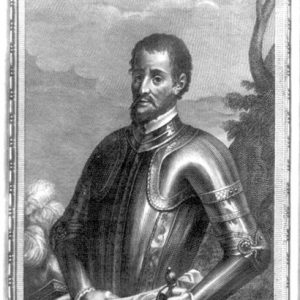 Hernando de Soto
Hernando de Soto 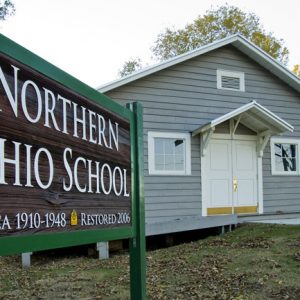 Northern Ohio School
Northern Ohio School 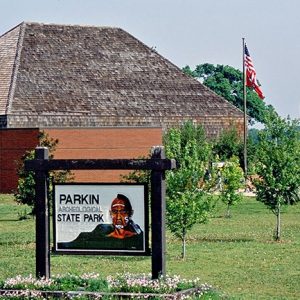 Parkin Archeological State Park
Parkin Archeological State Park 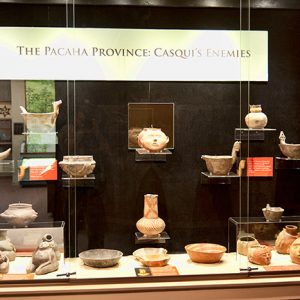 Parkin Archeological State Park
Parkin Archeological State Park 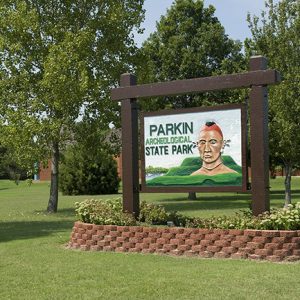 Parkin Archeological State Park
Parkin Archeological State Park 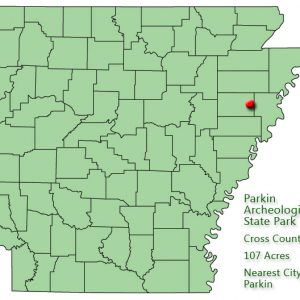 Parkin Archeological State Park: Park Location
Parkin Archeological State Park: Park Location 




Comments
No comments on this entry yet.